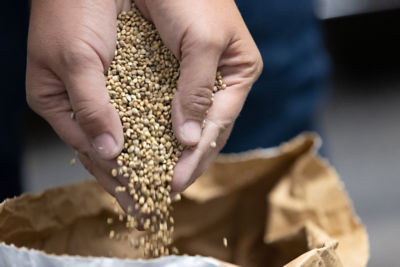Symptoms
Cucurbit Plant Salt Injury occurs because of the moderate sensitive to salinity. Excess salts may damage roots resulting in stunted plants with reduced yields. Affected plants often appear darker green than normal in the early stages of salt injury. Due to salt accumulation, leaf margins eventually become white and or yellow, and then necrotic. Crops with salt injury grown in artificial substrate often tend to be more susceptible to wilting during the hottest hours of the day, even when the moisture level is sufficient.
 Marginal yellowing of melon leaves caused by salt toxicity.
Marginal yellowing of melon leaves caused by salt toxicity.
 Burning of cucumber leaf margins due to salt toxicity.
Burning of cucumber leaf margins due to salt toxicity.
Conditions for Development
Many agricultural soils in arid climates are high in soluble salts. Additionally, irrigation water often contains excess salts. During irrigation, salts may not leach sufficiently from the root zone resulting in salt accumulation. This problem is more severe in soils that drain poorly.
Control
Measure the electrical conductivity (EC) of the soil, growing substrate and irrigation water to determine salt content. Avoid excessive fertilization. Where soil has good drainage it may be possible to reclaim saline soil by applying sufficient water to leach salts beyond the root zone. For greenhouse-grown crops in substrate, irrigate in excess of container capacity to prevent salt buildup.
Distribution
Worldwide




